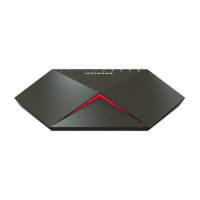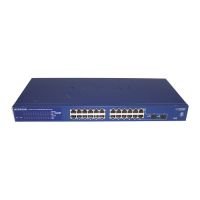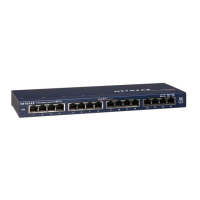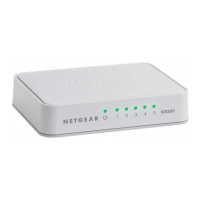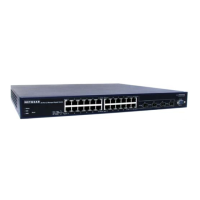Managing Device Security
243
S3300 Smart Managed Pro Switch
RADIUS Configuration
RADIUS servers provide additional security for networks. The RADIUS server maintains a
user database, which contains per-user authentication information. The switch passes
information to the configured RADIUS server, which can authenticate a user name and
password before authorizing use of the network. RADIUS servers provide a centralized
authentication method for:
• Web access
• Port access control (802.1X)
The RADIUS menu contains links to the features described in the following sections.
• Global Configuration on page 243
• RADIUS Server Configuration on page 244
• Accounting Server Configuration on page 245
Global Configuration
Use the Global Configuration screen to add information about one or more RADIUS servers
on the network.
Consideration to maximum delay time should be given when configuring RADIUS maximum
retransmit and RADIUS time-out. If multiple RADIUS servers are configured, the maximum
retransmit value on each will run out before the next server is attempted. A retransmit will not
occur until the configured time-out value on that server has passed without a response from
the RADIUS server. Therefore, the maximum delay in receiving a response from the RADIUS
application equals the product of retransmit × time-out for all configured servers. If the
RADIUS request was generated by a user login attempt, all user interfaces will be blocked
until the RADIUS application returns a response.
To configure global RADIUS server settings:
1. Select Security > Management Security > RADIUS > Global Configuration.
The Current Server IP Address field is blank if no servers are configured (see RADIUS
Server Configuration on page 244). The switch supports up to three configured RADIUS
servers. If more than one RADIUS servers are configured, the current server is the server
configured as the primary server. If no servers are configured as the primary server, the
current server is the most recently added RADIUS server.
2. In the Max Number of Retransmits field, specify the value of the maximum number of times
a request packet is retransmitted to the RADIUS server.
3. In the Timeout Duration field, specify the time-out value, in seconds, for request
retransmissions.
4. From the Accounting Mode list, select whether the RADIUS accounting mode is enabled or
disabled on the current server.
5. Click the Apply button.
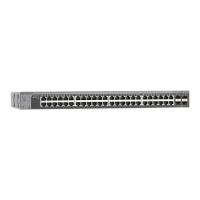
